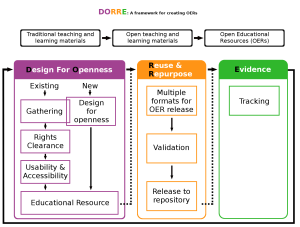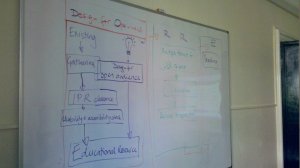A further 2 modules of content have now been released to the OSTRICH repository, one is from Psychology, the other Business.
First OERs released to repository
The OSTRICH team at Derby are please to announce the release of the first set of OERs from the subject area of Law. These consist of two full modules titled:
YouTube Policy [DRAFT VERSION]
One of the benefits of the OSTRICH project has been the awareness raising of copyright issues and recognition of a need to update policies. A number of key individuals / departments have been involved in creating a draft version of a YouTube policy. Below is an extract from the policy. Once the policy has been agreed by Executive and/or SMT we will provide a further update.
Below are some good practice guidelines for using YouTube material, if you are unsure or need further guidance please contact the Copyright Officer or Learning Technologist team.
- Make sure it is the owner of the content who has uploaded onto YouTube. Common sense need to be used to decide whether the material is legitimate or has been uploaded potentially illegally.
- Click on the name of the person who has uploaded the material, what other material have they uploaded?
- Is the material professionally filmed but uploaded by someone who has a diverse set of videos of varying quality?
- Has it been uploaded by a professional company i.e. Channel 4 or BBC?
- If unsure who owns the material, a Google search may identify the owner.
- If sure the owner has uploaded their own material, it is good practice to contact them to let them know you are re-using their material particularly if you are embedding into a module
- To re-use legitimate YouTube material you only have to comply with the restrictions the owner of the material imposes.
OER11 Conference – 11th May
The OSTRICH team were present at the OER11 conference on the 11th May and scheduled to present at 15:45 in the Cockcroft theatre.
The title of the presentation was “Developing workflow models for the creation of sustainable Open Educational Resources” and had the objective of illustrating how the CORRE model developed by Leicester had been further implemented at the Partner institutions.
The main output of the presentation was an evolved CORRE model called Design for Openness, Reuse and Repurpose, Evidence (DORRE) aimed at being more flexible to allow the creation of new material alongside the transformation of existing material.
Attached is the DORRE diagram presented at OER11 along with the presentation itself…
Preparation for OER11 – 12th April
The OSTRICH team will be presenting at the OER11 conference in Manchester on May 11th.
In preparation for the conference there have been regular virtual meetings in an attempt to flesh out the presentation. Although these have been useful, it was agreed that a good old fashioned face to face meeting was needed to finalise things. Leicester kindly agreed to host Julian (Bath) and I (Derby) for the day.
The presentation changed dramatically during the day, with an evolution of the CORRE model becoming the underlying theme and a new diagram, DORRE, would be the presented as the final piece of the jigsaw. The outline of the presentation was established as the following…
- Early OER workflow models (Gabi)
- Brief intro to CORRE/ OTTER (Ale)
- CORRE model for converting existing materials into OERs – Derby (Sam)
- CORRE model – developing OERs from scratch (Julian)
- Next steps (Ale)
Open Nottingham 2011 – 7th April
Members from the OSTRICH team attended this conference last Thursday with Gabi Witthaus (University of Leicester) and Jamie Grace (University of Derby) sharing a slot to present their talk “Some thoughts on OER reuse from Derby to Kabul”.
I will provide an overview in the next post and hopefully the video to the keynotes and some of the parallel sessions.
In the mean time here is a link to the videos from the 2009 conference...
Rough sketches of CORRE with roles…
I have been using a tablet recently to produce some maths videos and I ended up sketching out how the roles involved in CORRE fit at certain stages. The stages are coloured to match the CORRE model.
Attached is a pdf showing this…
Module Life-cycle
As part of the OSTRICH project we are attempting to identify ways of sustainable integration of OERs at Derby.
Although the CORRE model has been extremely useful in providing a framework for converting existing materials, it is not a model for developing a new OER module.
This has therefore seemed like a good opportunity to look at the e-module life-cycle at Derby and how we can integrate OER training and IPR clearing into new module development.
Below is an old e-learning module development process (used as a starting point) and the beginnings of hopefully a new e-module life-cycle with OER as an integrated part.
IPR Workshops
Recently I attended two workshops, “OER IPR support online” and “Before you start; OER, IPR and Licensing”.
Both proved very useful in terms of reflecting on what as an institution we should be taking into consideration and providing detailed explanations on IPR/CC issues.
The speakers were excellent proving to be absolute experts in their fields.
http://wiki.creativecommons.org/Creative_Commons_and_Open_Educational_Resources
Visit to Buxton
Today we had a very productive meeting with academics from the Buxton campus involved in OSTRICH. The agenda was primarily focused on the two modules that will provide 30 of the 100 credits for the project. The modules will consist of a handbook, reading list, lecture materials (hopefully with optional audio accompaniment) and supporting activities.
We also got the chance to flesh out two interactive exercises, “Drawing to Scale” and “Risk Assessment”, that will be produced in-house by the CELT team at Derby

